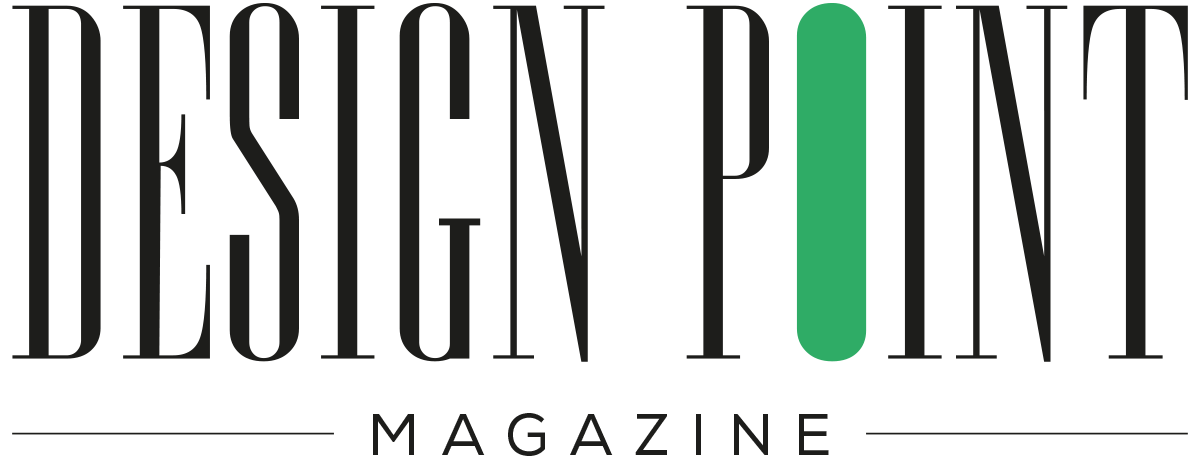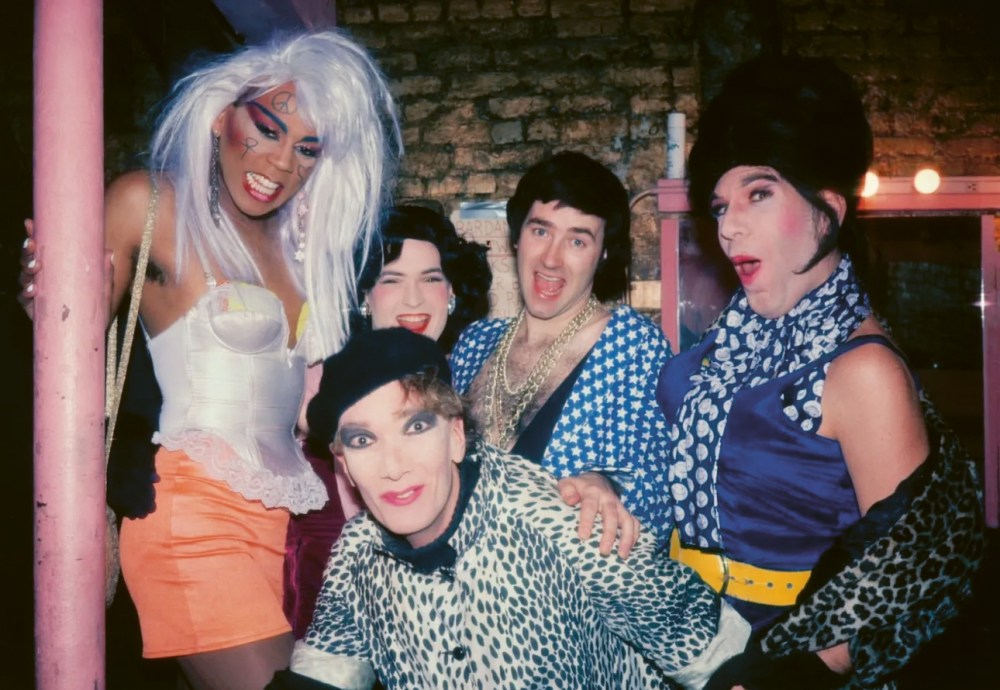The narrative of marginalized communities being underrepresented and even erased from history is all too familiar. So much is lost with time, but especially those stories, moments, people, and places that existed outside of the mainstream. Writer, historian, and New York native Marc Zinaman identified this absence in the chronicling of the city’s queer community, and decided to do something about it. He began an Instagram account in 2021, @queer_happened_here, as a resource and community hub on which to document and archive gay spaces from throughout history. This past April, Zinaman published an adaptation of his extensive online archive as a physical book entitled, Queer Happened Here: 100 Years of NYC’s Landmark LGBTQ+ Places.
Replete with photographs, flyers, posters, magazine spreads, other ephemera, stories, and research, Queer Happened Here chronicles the evolution of queer culture in Manhattan between 1920–2020 in a large, hardcover coffee table book. Zinaman unpacks the Queer Happened Here journey below.
(Interview lightly edited for length and clarity.)
RuPaul, Billy Beyond, Larry Tee, Hapi Phace, and Hattie Hathaway (front) at the Pyramid, circa 1980s. © Ande Whyland.
Can you briefly walk me through the origin of the greater Queer Happened Here project? Why is Queer Happened Here the book you were compelled to put out into the world?
The Queer Happened Here project originally began as a personal curiosity that was piqued by my watching two back-to-back documentaries about Studio 54. Although I knew a lot about Studio 54—which has been covered extensively—I was struck by brief mentions in both films of several other unbelievable-sounding queer nightlife spaces I’d never heard of. These were spots like GG’s Barnum Room, which had transgender trapeze artists suspended over the dance floor, and Crisco Disco, known for its DJ booth shaped like a giant Crisco can. Despite being a native New Yorker, I was surprised I’d never before come across mentions of these absolutely wild-sounding places, and found myself somewhat frustrated that these seemingly iconic spots had largely escaped public memory.
I took a step back and realized I had mapped nearly 1,000 queer spaces.
This initial curiosity evolved into what became a daily ritual, where each morning I’d wake up and research two or three new locations of interest, documenting their addresses, years of operation, images, and any available history I could find. I then started organizing these findings on a simple Google Map, initially just for my own personal reference. However, when the pandemic hit, this habit turned into a deeper obsession, and before long, I took a step back and realized I had mapped nearly 1,000 queer spaces.
It wasn’t until several conversations about these places with friends and other LGBTQ+ community members my age that I realized just how forgotten or entirely unknown many of these places were. That realization compelled me to start sharing my findings publicly, and inspired the launch of the Queer Happened Here Instagram account in 2021. I intended for the account to be both a platform where I could share these overlooked histories with friends, but also as a space to possibly connect with others who were doing similar work, or who may be holding onto their own stories, photographs, and memories from these places which they could then also share.
The steady growth and enthusiastic reception on social media that followed, revealed to me that there was a clear community desire for this type of archival storytelling.
The steady growth and enthusiastic reception on social media that followed revealed to me that there was a clear community desire for this type of archival storytelling. Eventually, that also motivated me to transform the project into a book, which can represent a more permanent, expansive, and differently accessible effort to preserve and celebrate these vital aspects of LGBTQ+ history and culture.
Crisco dancers, 1979. © Bill Bernstein (Last Dance Archives).
What was your research process like for this incredibly thorough and detailed compilation? Where have you sourced the material and ephemera?
My research for Queer Happened Here was a layered and multifaceted archival excavation that took me all over the place. Because this project is visually driven—the book is a photo-laden coffee table-style book and Instagram is, well, Instagram—finding compelling imagery was critical, and often more challenging than the writing itself. Historically, many queer nightlife spaces were intentionally undocumented to protect attendees’ privacy and safety, particularly before cell phones made spontaneous photography commonplace. And given that many of these pivotal places were indeed nightlife venues, people mainly went to them in order to escape and be in the moment, not to capture and archive their experiences.
To gather images, I thus found myself in a variety of places—academic libraries, community archives, private collections, deep corners of the internet—and combing through all kinds of formats, including club flyers, zines, and vintage LGBTQ+ publications. I also reached out to photographers like Meryl Meisler, Ande Whyland, Efrain Gonzalez, Tina Paul, and Linda Simpson— individuals I knew and followed who were deeply embedded in and committed to visually documenting New York’s LGBTQ+ communities. I also stumbled upon unexpected but rich resources in several extremely active and niche Facebook groups devoted to specific historic nightclubs.
Beyond imagery, sourcing reliable information was also challenging. Many queer venues, especially nightlife spots, existed off the grid and were scarcely written about in mainstream media. Establishing accurate dates, addresses, and even precise venue names often required cross-referencing official records with informal sources such as flyers, interviews, and collective memories. Recognizing these limitations, I quickly found that oral histories and firsthand accounts were going to be essential, and so I conducted interviews with legendary nightlife figures like Susanne Bartsch, Johnny Dynell, and Robbie Leslie alongside countless everyday club patrons in order to better capture the vibrant, nuanced experiences that defined these spaces.
Drag performer at Pride brunch, 2023. © Wes Kloefkorn.
…while digital platforms are invaluable for ongoing community engagement, a tangible book can present these stories in a lasting and differently accessible format.
Why is presenting this information in the form of a physical book, in particular, so important to you?
The decision to present this material as a physical book became important because it offers a permanence that social media cannot. While I do back up my material, Meta could decide any day it wants to just wipe my account. And while digital platforms are invaluable for ongoing community engagement, a tangible book can present these stories in a lasting and accessible format. There are also plenty of audiences–many older queer folks, for example–out there who aren’t necessarily using or frequently engaging with social media, and so perhaps this book can find its way to them instead.
House of Xtravaganza voguing (Luis, Dany, Jose, David Ian), 1989. © Chantal Regnault.
What was your thought process behind the design of the book? What considerations went into those visual details?
The book’s design was very much a collaborative process, largely driven by the incredible team who worked on it—John Philip Sage and Asad Pervaiz—as well as Ali Gitlow and myself. Overall, the thought process was motivated by the need to visually reflect the layered and dynamic nature of queer nightlife history and, ultimately, the design aims to honor the eclectic, ever-evolving spirit of LGBTQ+ culture in New York City.
According to Sage and Pervaiz: Queer Happened Here is landing at a time when these histories feel more urgent than ever, and it was important to us that the design invite readers to engage with care. We wanted the design to walk a line between playful energy and deep respect for the material— something that felt celebratory but also thoughtful, especially given the significance of these moments and spaces.
We pulled visual inspiration from queer DIY publishing and communication traditions. We physically printed, folded, and scanned the title treatments, creating textures of a flyer or handout as an homage to the exchange of information and passing through hands. Duotone treatments further add a nod to old zines and underground papers. It was also important to acknowledge these histories in the context of both time and space. The book uses a grid system based on the island of Manhattan, and club names are styled as signposts. On the chapter dividers, the locations are mapped according to their real locations, almost like a night out, you can trace with your finger.
We physically printed, folded, and scanned the title treatments, creating textures of a flyer or handout as an homage to the exchange of information and passing through hands. Duotone treatments further add a nod to old zines and underground papers.
Funmakers’ Ball participants Eddie Mcclennon, Bobbie Laney and Toni Evans, 1954. © Johnson Publishing Company Archive, courtesy J. Paul Getty Trust and Smithsonian National Museum of African American History and Culture.
What’s next for the Queer Happened Here project?
I definitely plan to continue running the Queer Happened Here Instagram account, and am still interested in exploring the intersections of queer history and place— especially in ways that bring untold or overlooked stories to the surface. There’s also still so much of New York City left to highlight— on Instagram, I cover all five boroughs, for example, whereas this book only explores Manhattan, so perhaps more books can come out of that. Even Manhattan alone, though, could generate several more volumes, since this book contains less than a hundred spots, whereas on the map, I’ve got over a thousand pinned.
…engaging with LGBTQ+ elders will remain central to my approach; their memories and experiences are invaluable and deserve to be captured and preserved.
At the same time, I would also like to maybe shift focus to other cities or regions that haven’t received as much recognition as New York, but whose stories are perhaps even more pressing. New York City was a logical jumping off point because it’s my hometown, but I recently spent several months working with a queer archival project dedicated to preserving experiences from the Deep South—places like Georgia, Alabama, and Mississippi—and that was incredibly compelling work that feels especially critical right now.
Regardless of my next steps, I think engaging with LGBTQ+ elders will remain central to my approach; their memories and experiences are invaluable and deserve to be captured and preserved. While I have some potential projects already in mind, I’m also intentionally leaving room open for further discoveries. One of the key lessons I’ve taken away from doing this work is that queer history has a habit of appearing in unexpected ways, so I’m committed to staying open-minded, and letting the stories I find guide me.
Marc Zinaman © Gregor Hochmuth.
…queer history has a habit of appearing in unexpected ways, so I’m committed to staying open-minded, and letting the stories I find guide me.
The post ‘Queer Happened Here’ Unearths a Century of NYC’s Underground Queer Spaces appeared first on PRINT Magazine.

